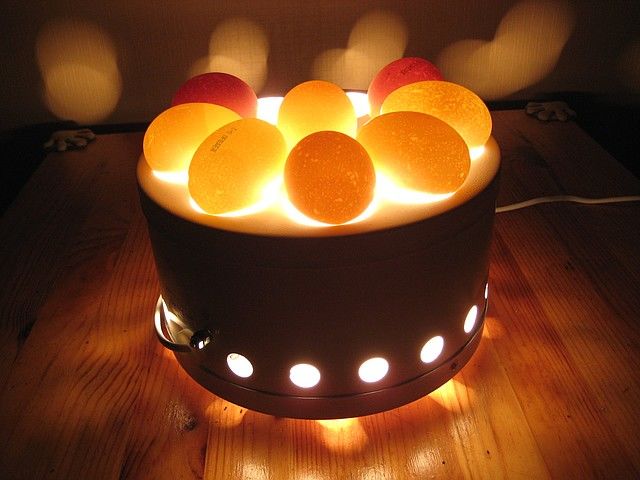List of tested foods. Reminder to the consumer if you bought low-quality food
Last year, a resident of St. Petersburg told the editorial office of one of the newspapers that he bought cottage cheese not far from his house and decided, for the sake of interest, to check whether it burns when heated. What was his surprise when he saw: in the process of burning, the curd turned into a black liquid with a characteristic smell of chemistry.
The conducted investigation confirmed that the product he bought does not contain cottage cheese, although it is included in the composition. The basis of cottage cheese was made up of hazardous fat substitutes such as palm oil. The most interesting thing is that on the packaging of the product it was written “cottage cheese”, while in the documents it was listed as “curd product”.
Recent laboratory tests 5 types of butter, conducted by the Russian Institute of Consumer Nutrition, revealed that one of them also did not correspond to the specified composition. The test results suggested the presence of non-dairy fats in the oil.
Despite the proliferation of warnings about how important it is to read the information on the packaging of the product, unfortunately, today it is impossible to be sure that the indicated composition will be close to the real one.
In addition, according to the law, the manufacturer is obliged to report the composition of the product only if it is made in accordance with GOST. In the event that the product is manufactured according to the specifications, the manufacturer is not required to write the composition. To save even more, industrialists came up with concepts such as "curd or cheese product." In this case, such products are not subject to any technical specifications at all. In other words, such a product may not contain milk. But do not despair, because you can check the quality and composition of some products yourself on the store counter or at home.
How to check products for quality in the store?
When choosing food, you must carefully read the information on the package: product name, weight, calorie content, composition, expiration date and storage conditions, manufacturer's address, barcode.
Cheese
Determine the quality of the cheese appearance almost impossible. However, experts believe that under the current market conditions, a kilogram of cheese cannot cost less than 600-700 rubles. Since the cost of one liter of milk is approximately 30 rubles, and for 1 kg of cheese a minimum of 10 liters of milk is used, the cost of cheese is 300 rubles. Also, to this cost you need to add the leaven, enzymes, the work itself and the seller's margin.
In the store, you should also pay attention to the cheese crust. It should not have cracks and plaque. Bacteria can get into the cheese through cracks and the product can begin to spoil.
That. in the store, we can analyze the quality of the cheese according to the information indicated on the package (try to choose GOST cheeses), as well as the price. Some information can be given by color: unnaturally yellow (poisonous) colors of cheese indicate the addition of chemical dyes to the product.
Beef, pork
- When choosing meat, you need to pay attention to its color and texture. Fresh and high-quality meat should be from light pink to red.
- If the meat is dense and elastic, and when you press the meat with your finger, a dent forms, which quickly levels out, then the meat is fresh.
- Meat that has begun to deteriorate is treated with potassium permanganate. You can recognize this by fat, which becomes pink.
- Also used for spoiled meat Chemical substance- fuchsin. To recognize magenta, take a napkin to the market and attach it to the meat. You will see a bright pink imprint on the napkin.
- Unscrupulous sellers increase the weight of meat at the expense of water. It is very easy to check the water content in the market or in the store. It is enough to press a finger on the middle of the piece. Water will appear in the formed hole.
- Meat can also be unevenly puffed up due to being treated with water-retaining and weight-enhancing polyphosphates.
Chicken
For rapid growth, chicken is often fed with hormones and growth regulators, this is no longer a secret to anyone. It’s great if the buyer, when choosing a chicken, determines how proportional the product is: a quality chicken without hormones will have long legs and a proportional rounded chest. However, this definition is likely to be difficult for most.
Another point related to chicken: when chicken meat begins to deteriorate, in some (especially not large) stores and markets they can mask its staleness by processing it in a solution of washing powder, dishwashing detergent or antiseptics (chlorine, formalin). Sometimes a disturbing smell is felt even through the packaging. Therefore, to check the product before buying, it will not be superfluous to smell it.
A fish
As a rule, the scales of high-quality fresh fish are covered with transparent mucus, and the abdomen should not be swollen. If the fish is fresh, then the eyes should be shiny, while the frozen ones are a little pale. A finger dent on fresh fish, as well as on meat, should quickly level out.
Recognizing the larvae of worms in fish can be very difficult due to the fact that the diameter of some species is thinner than a human hair. But there are some external signs indicating the presence of helminths.
- The presence of black dots on the skin is postodiplostomiasis. These are black marks that the worms have hit the deep layers of the skin of the fish.
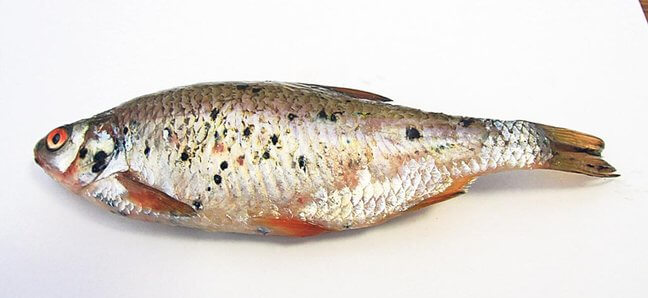
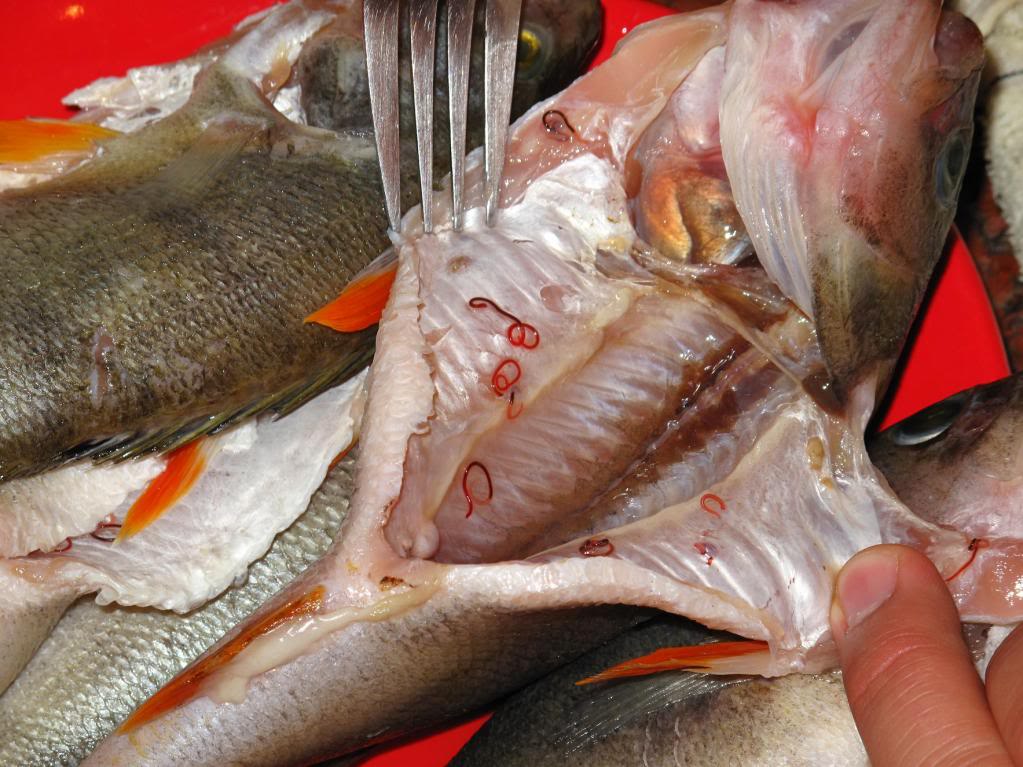
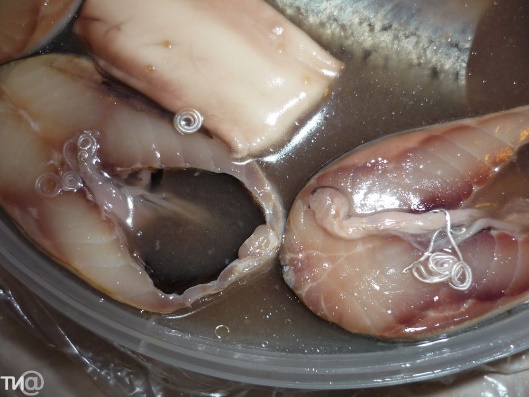
- Visible larvae of nematodes that have invaded fish fillets, such as tadpoles, are most often found in pollock.
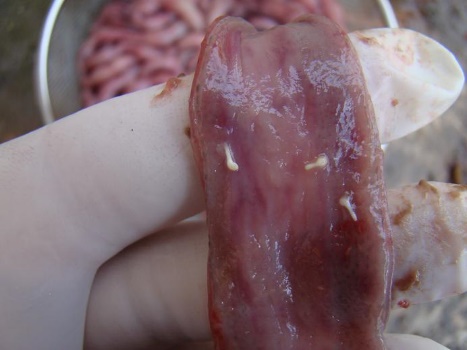
When buying eggs, it is important to pay attention to the date of their packaging and shelf life. The shelf life of eggs is usually 3-4 weeks. But this period is again determined by the thickness of the shell.
Checking the egg in the store is quite simple. Almost all chain supermarkets are now equipped with a special device - an ovoscope, which are located near the cash register. When checking with an ovoscope, the egg should not have heterogeneities, dots and clots.
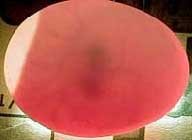
The shell membrane is damaged, the shelf life with such a defect is 24 hours.
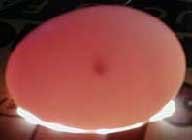
There is one or more small fixed spots under the shell.
Also, the freshness of eggs can be judged by their weight. During storage, a lot of air is formed in it. Due to this, the egg becomes lighter, while the fresh egg is heavier. Therefore, if you are not sure about the expiration date of the eggs, you can take two eggs from different boxes and compare their weight on the scales in the store.
Rotten eggs do not shine through at all.
Dried fruits
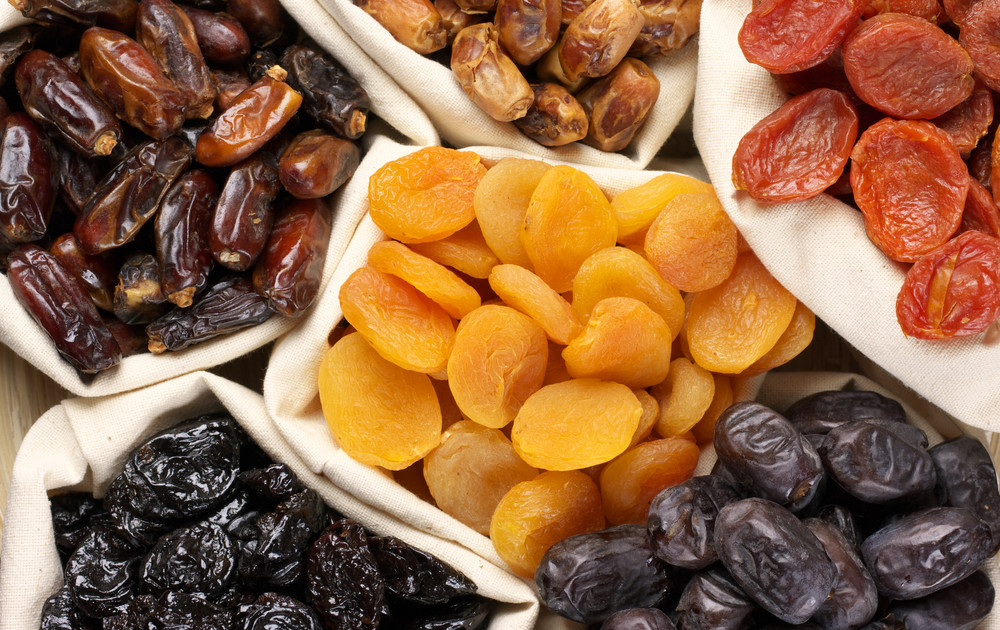
When choosing dried fruits in the market or in a store, pay attention to their too bright unnatural shine. It may indicate that the dried fruit is moldy. Vendors often clean off mold vegetable oil. The smell of machine oil from dried fruits also indicates a low quality of production and storage. In the markets, they may offer to try dried fruits from the counter. It is better to refrain from this: hepatitis A or infection with worms, for example, will not benefit anyone.
Checking products at home
Eggs
At home, you can check the eggs in a simple way.
Pour into a liter of water to the top and pour a spoonful of salt there. Dip the egg in the water. A fresh egg should sink to the bottom on its side. Stale will hang near the bottom or float in the water.
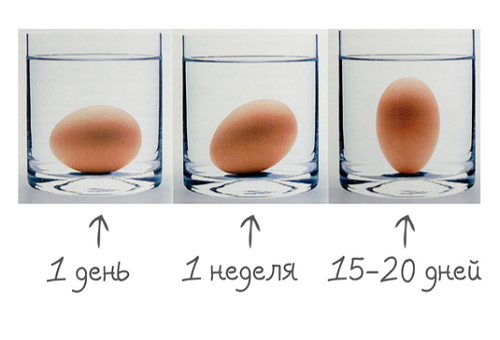
An egg that floats to the surface of the water is considered completely spoiled. This is due to the fact that during storage, carbon dioxide evaporates from the egg. And oxygen accumulates, due to which the egg deteriorates.

If you are going to add an egg to pastries, then it is better to break it first into a separate plate. If the yolk looks like a ball, and the albumen gathers around it, then the egg is fresh. If the yolk spreads on a plate, and the protein is similar in consistency to water, then such an egg is spoiled.
Milk
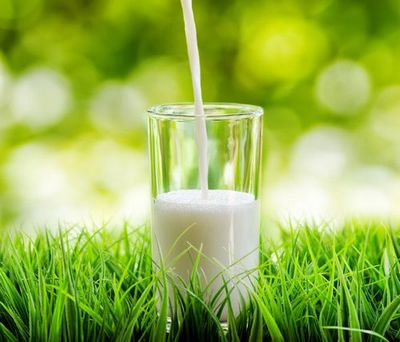
Before milk hits the shelves of stores, it goes through a long stage of processing in production. Initially, the milk is filtered and then separated in special separators, where the cream is separated from it. After separation, the milk is considered skimmed. The last stage is pasteurization at a certain temperature. Depending on this temperature, the shelf life of milk also varies. For example, UHT milk is heated to 150°C, after which it can be stored for up to six months. In order to create a certain fat content in milk, non-dairy fats are added to it. They cost less than milk, and certainly affect the quality of the product. It is very difficult to determine the content of such fat in milk. Today, there is not even a standard method for determining a specific fat of non-dairy origin in the laboratory.
Pay attention to the composition of milk, as well as its price. If you see suspiciously cheap milk, the cost of which differs significantly from the cost of other packages, this is a sure sign that the milk contains dangerous fats.
To preserve milk, various stabilizers, soda and antibiotics are added to it.
To understand if milk contains chemicals, do a simple experiment at home. Pour 150 ml of milk into a glass and put a teaspoon of sour cream in it, leave in a warm place. Natural milk without antibiotics and fats will turn sour in 4 hours or even turn into yogurt.
To determine soda in milk, drop a drop of vinegar into it - a violent reaction will certainly go on.
Manufacturers also add starch to milk to thicken it. You can check the starch content by the blue color of milk after a drop of iodine.
Cottage cheese
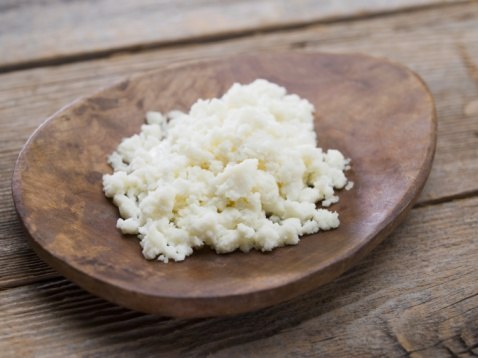
Most often added to cottage cheese . Checking for its presence is very simple - leave the cottage cheese at room temperature at 12 o'clock. If the cottage cheese began to turn sour, then it is natural. If it turned yellow, winded and did not change the smell, then it consists of non-dairy fats.
To increase the weight, starch or chalk is also added to the cottage cheese. Starch can be determined by dropping a drop of iodine into the curd. On natural, you will see a drop of iodine that has not changed in color. Poor-quality cottage cheese will change color to green or blue.
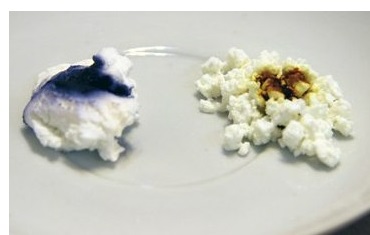
Sour cream
Starch, as well as stabilizers and thickeners, are added to sour cream to increase weight.
Natural sour cream dissolves in hot or warm water. If after dissolving in water you see a precipitate, then sour cream contains additives.
The presence of starch can also be determined by dropping iodine into sour cream.
Butter
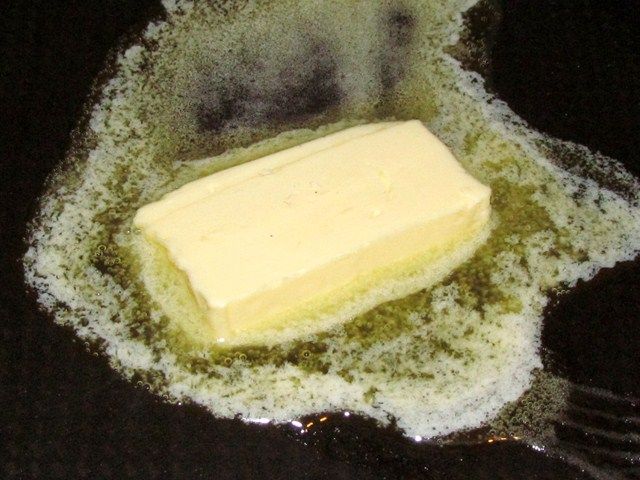
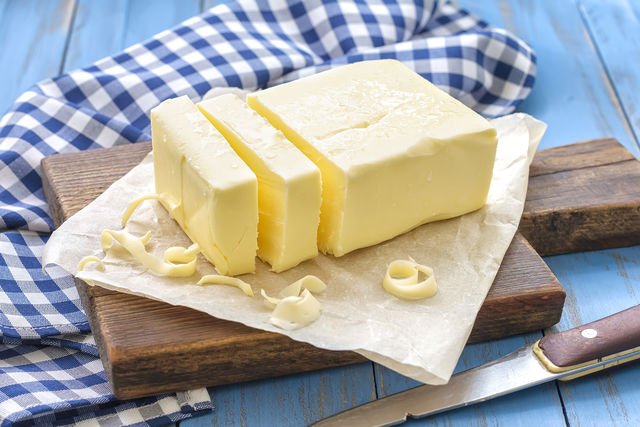
Butter naturally begins to float and melt at room temperature. But if you leave palm fat butter for two hours, it will not change shape.
When cutting with a knife after freezing, natural butter breaks off into pieces. When heated in a pan, natural oil will foam and then blacken, a fake will be a homogeneous plastic mass.
Chocolate
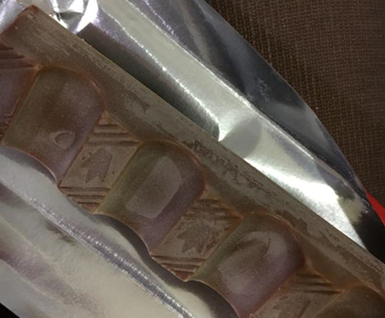
ABOUT good quality chocolate can be judged by white bloom arising from temperature differences. You can create such a difference if you hold the chocolate in the refrigerator, and then take it out and hold it over hot water or stove.
Honey
Starch is added to honey (check with iodine), chalk and sugar syrup.
The presence of syrup can be checked by smearing honey on paper and setting it on fire. Natural honey will melt and sugar syrup will burn and char.
You can also put a piece of bread in honey. In high-quality honey, bread will harden, and in sugar syrup it will soften.
If chalk was added to honey, then when vinegar is added to an aqueous solution of honey, a white precipitate will form.
Flour
To increase the weight, chalk and starch are added to the flour. When vinegar is added to such low-quality flour, intense foaming will begin, and a drop of iodine will give a blue color. If you find such flour, remember its manufacturer and do not buy again.
It is also important to note that in our country there are public organizations, as well as government agencies that control the quality of products. If you bought a low-quality product or doubt its quality, you can contact the relevant services. In our country, these are Rospotrebnadzor and Rosselkhoznadzor. There are also public organizations "Roskachestvo" and "Roskontrol", on the website of which or in mobile application you can get acquainted with the products that have already passed the tests.
0 425 To the forumREMINDER TO THE CONSUMER
IF YOU BUY POOR-QUALITY FOOD PRODUCTS
What food products are recognized as low-quality, dangerous and cannot be sold, disposed of or destroyed? In accordance with federal law from 02.01.2000 29-FZ "On the quality and safety of food products" Food products that:
Doesn't meet requirements normative documents;
They have obvious signs of poor quality, which do not cause doubts among representatives of the bodies exercising state supervision in the field of ensuring the quality and safety of food products (hereinafter referred to as the bodies state supervision) when checking such products, materials and articles;
Do not correspond to the information provided and in respect of which there are reasonable suspicions of their falsification;
Dont Have deadlines shelf life (for food products, materials and products for which the establishment of expiration dates is mandatory) or whose expiration dates have expired;
Are not labeled with information required by law or government standard, or for which such information is not available.
What information about the product should the seller bring to the consumer?
In accordance with Art. 10 of the Law and GOST R 51074-2003 “Food products. Information for Consumers” the seller is obliged to bring to the attention of the consumer the necessary and reliable information about the goods, ensuring the possibility of their right choice, namely:
Product name;
Variety (if any);
Name and location of the manufacturer;
Trademark of the manufacturer (if any);
Net weight, or volume, or quantity;
Composition of the product (excluding products consisting of 1 ingredient);
Food additives, biologically active food supplements, ingredients of non-traditional products;
Date of manufacture and date of packaging;
Storage conditions;
Best before date;
Designation of the document in accordance with which the goods are manufactured and can be identified;
Information about confirmation of conformity;
Thermal state (chilled, frozen); packed under vacuum (if there is a vacuum in the package);
Purpose and condition of use for children's and dietary food products, dietary supplements;
The rights of the consumer upon detection of the sale of low-quality food products. In accordance with Art. 18 of the Law of the Russian Federation "On the Protection of Consumer Rights" (hereinafter referred to as the Law), Art. 503 Civil Code In the event of a defect in the goods, the buyer has the right, at his choice, to demand:
Replacement of low-quality goods with goods of good quality;
Proportionate reduction of the purchase price;
Instead of presenting the above requirements, the buyer has the right to refuse to fulfill the contract of retail sale and demand the return of the amount paid for the goods.
In case of refusal to fulfill the contract of retail purchase and sale with the requirement to return the amount paid for the goods, the buyer, at the request of the seller and at his expense, must return the received goods of inadequate quality.
When returning to the buyer the amount paid for the goods, the seller is not entitled to withhold from it the amount by which the cost of the goods has decreased due to the full or partial use of the goods, loss of presentation etc.
The retail sale contract is considered concluded in the proper form from the moment the seller issues the buyer a cash or sales receipt or other document confirming payment for the goods. If the buyer does not have these documents, it does not deprive him of:
his ability to rely on witness testimony in support of the conclusion of the contract.
What to do in case of purchase of low-quality products?
It is necessary to contact the seller with a written claim, drawn up in 2 copies, in which one of the legal requirements must be clearly formulated.
The claim must indicate the name of the product, manufacturer, date of manufacture and packaging, grade, expiration date, net weight, thermal state (chilled, frozen) and other distinguishing features of the product indicated on the label. One copy of the claim must be handed over to the seller (legal representative legal entity, an individual entrepreneur, or a person authorized to accept a claim), or send it by mail with a letter of receipt. the person making the claim.
Important! The consumer has the right to make claims about the shortcomings of the goods during the expiration date. Examination of food products is advisable to carry out only if the consumer packaging (packaging) is not broken. otherwise, it is not possible to prove that the reason for the decrease in quality is the fault of the manufacturer or seller. Therefore, when contacting the manufacturer, seller, or supervisory authorities with a claim on the quality of food products, it is necessary to indicate: the manufacturer, product name, variety, net weight or volume in consumer packaging, date of manufacture and packaging, and other distinguishing features of the product. select food products for examination in accordance with the requirements of regulatory documents.
If the seller refuses to satisfy the claims stated in the claim, on a voluntary basis, the consumer has the right to apply to the court of his choice: at the location of the organization, at the place of residence or stay of the consumer, or at the place of conclusion or execution of the contract.
Consumer Dictionary:
Consumer - a citizen who intends to order or purchase or ordering, acquiring or using goods (works, services) solely for personal, family, household and other needs not related to the implementation entrepreneurial activity.
The seller is an organization, regardless of its organizational and legal forms and also individual entrepreneur selling goods to consumers under a contract of sale.
The quality of food products is a set of characteristics of food products that can satisfy human needs for food under normal conditions of their use.
Food safety is the state of reasonable assurance that food, under normal conditions of use, is not harmful and does not pose a risk to the health of present and future generations.
Regulations- state standards, sanitary and veterinary rules and regulations that establish requirements for the quality and safety of food products, materials and products, control over their quality and safety, conditions for their manufacture, storage, transportation, sale and use, disposal or destruction of low-quality, hazardous food products, materials and products.
Technical documents - documents, in accordance with which the manufacture, storage, transportation and sale of food products, materials and products are carried out ( specifications, technological instructions, recipes, etc.).
Shelf life - the period after which food product considered unsuitable for its intended use.
, , ,
Checking the quality of foods before eating them is very important. The classic said: "There is only one freshness - the first, it is the last." But how often do we run into products of "second" freshness, or even completely falsified ones. Eating such foods is strictly not recommended. But how do you recognize them?
Meat quality
It is necessary to press the meat with your finger, if the resulting hole quickly levels out -. Fresh meat on the cut is almost dry. If the meat is well frozen, heat the knife and pierce the meat - if it is spoiled, the knife will have an unpleasant smell.
Fish quality
A good fish has smooth, shiny, tight-fitting scales. The eyes are bulging, transparent, not whitish. Gills bright red. The belly is not swollen. Immerse the fish in a container of water, if it sinks, then it is fresh. If the subcutaneous layer of salted fish is rusty in color, there is a viscous, milky-white mucus and the meat near the spine is reddened with a bitter-sour taste - then this is not suitable for food!
Sausage quality
It happens that spoiled sausage is tinted with magenta to give it a beautiful fresh look. Cut the sausage and pour over with vodka. From magenta turns red.
Butter quality
Melt a piece of butter in warm water, if it becomes cloudy - you have a fake in front of you.
sunflower oil quality
Sediment in a bottle of vegetable oil indicates oxidation of the product. This gives bitterness and foams when heated.
canned food quality
Swelling of the lid and bottom of a metal can is associated with the accumulation of gas-producing microorganisms, which makes the product unfit for consumption.
honey quality
Real honey does not contain water. Dip a piece of bread in honey for 8-10 minutes. Bread will harden in undiluted honey. And if it softens, you have sugar syrup in front of you. Smear honey on a piece of paper and write something on the “honey” strip with an indelible pencil. If the inscription appears of blue color- Honey has moisture. Add a drop of iodine to a small amount of honey diluted with water. If the solution turns blue, flour or starch is mixed with honey. Dissolve in water (1:2). A solution of falsified honey will turn out to be cloudy, and after a while a precipitate will fall to the bottom.
The quality of black pepper
When black pepper is immersed in water, the good grains sink and the bad ones float.
tea quality
After brewing tea, dip a slice of lemon into it. If brightened - everything is in order. If the color does not change, then you have a low-grade fake. The age of tea can be determined by the color of the rim between the tea infusion and the walls of the vessel. He must be yellow color. A greenish tint is evidence of not the first youth of tea.
